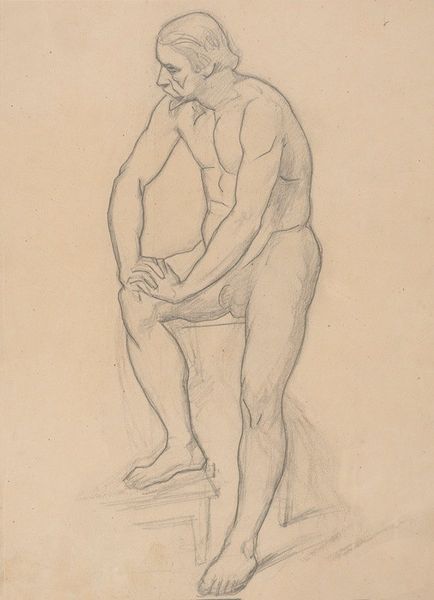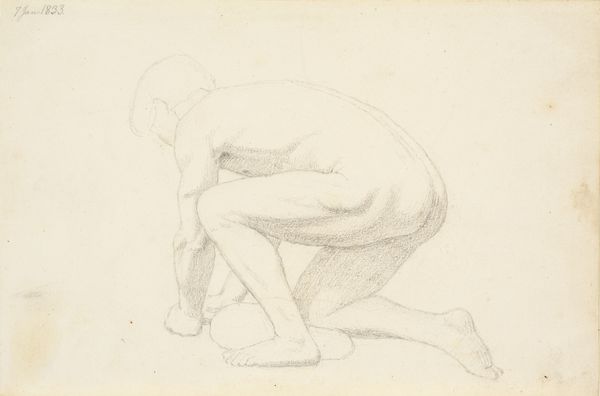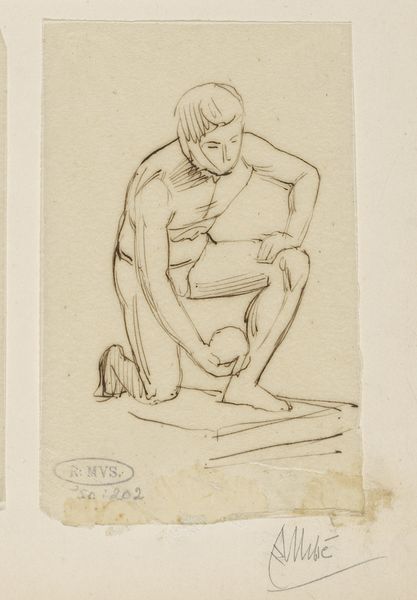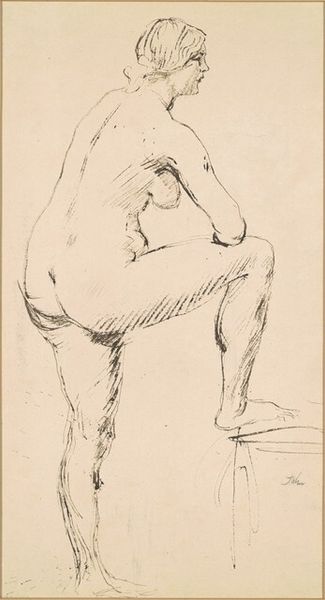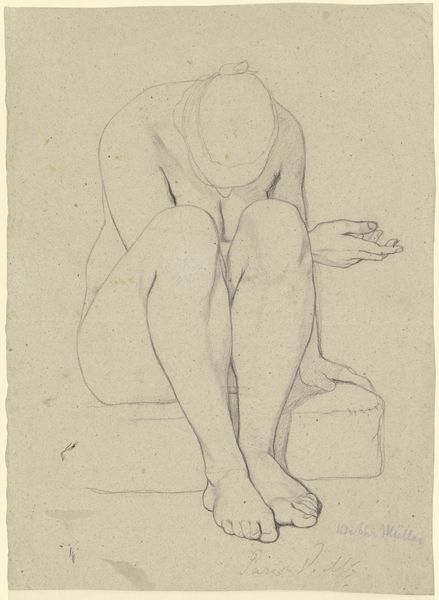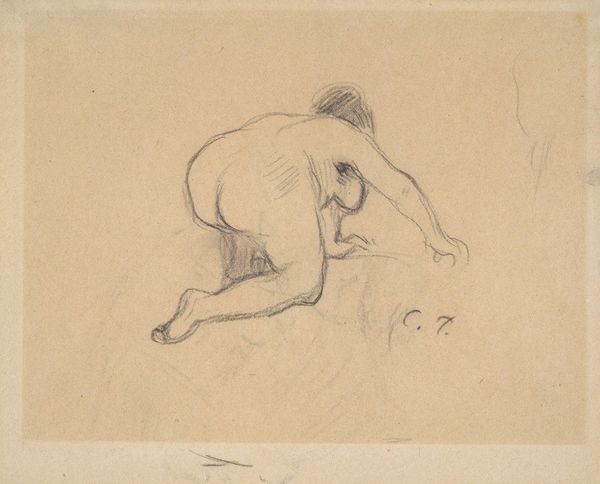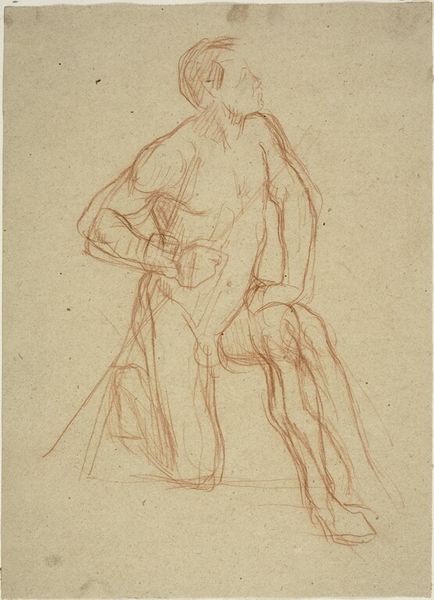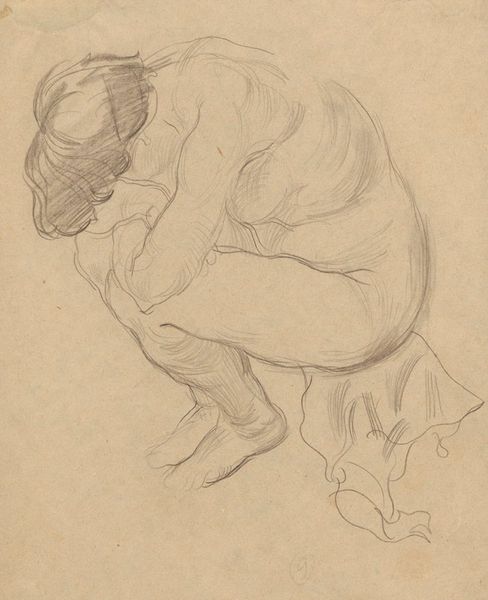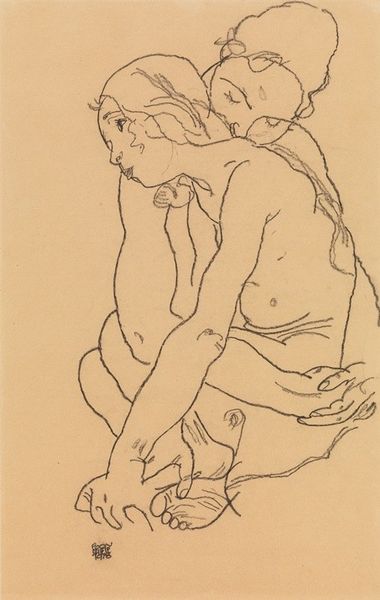
Copyright: Public Domain: Artvee
Curator: This arresting sketch, rendered in pencil between 1862 and 1863, is titled "Homme drapé de profil à gauche, genou droit à terre" - or, "Draped Man in Profile to the Left, Right Knee on the Ground". It is the work of Pierre Puvis de Chavannes. What strikes you immediately? Editor: A sense of solemnity. The hunched figure, the muted tones of the pencil on paper... it feels like a study in melancholy. The draping suggests classical antiquity, but there's also a raw, almost vulnerable quality. Curator: The draping is indeed key. The figure is partially nude, yet covered, which hints at a concealed narrative. Consider how covering can simultaneously reveal and obscure meaning. This work belongs to the Romanticism style as well as academic art, with the combination often used to invoke allegorical themes. What psychological impacts do you perceive from these dual influences? Editor: Well, it's an interesting combination. Romanticism, at its core, is about emotion and individual experience. Pairing this with the strict academic form, complete with classical references, brings both structure and deep passion to the subject. Curator: Precisely! We can infer that this academic romanticism seeks to imbue emotional and internal truths within a structured order. It might reflect the 19th-century artistic anxieties – seeking innovative expressiveness but wanting it controlled by tradition. He also seemed deeply influenced by mural painting traditions, which emphasizes clarity of form to enable narrative. Editor: A kind of control – or containment? Given the era’s rigid social structures, you wonder what feelings might be contained within that draped, kneeling form. Did society push for concealment rather than release? Curator: Yes! It raises crucial questions about the socio-political constraints of expressing interiority publicly. Academic art and romanticism co-existing could, here, be considered ways that art attempts to mediate freedom within rules, making symbolic form both available and censored to its audience. The viewer participates actively in interpreting it. Editor: The play of light and shadow emphasizes the form, highlighting the subject's muscles under this loosely draped covering. It calls attention to both concealment and powerful beauty. Overall, this piece resonates deeply with emotional subtlety and strength restrained. Curator: Ultimately, what captivates me about this piece is its layered tension: exposure and protection, expression, and restraint, speaking silently, but insistently to viewers willing to engage the deeper symbolism.
Comments
No comments
Be the first to comment and join the conversation on the ultimate creative platform.
